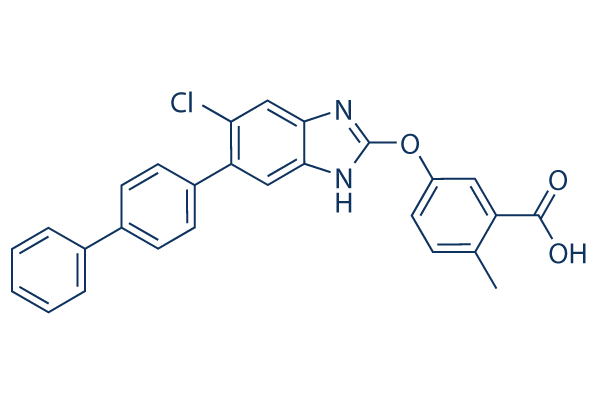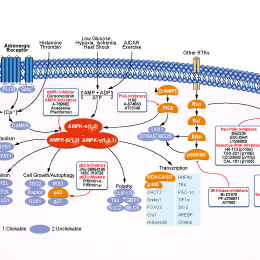
- Bioactive Compounds
- By Signaling Pathways
- PI3K/Akt/mTOR
- Epigenetics
- Methylation
- Immunology & Inflammation
- Protein Tyrosine Kinase
- Angiogenesis
- Apoptosis
- Autophagy
- ER stress & UPR
- JAK/STAT
- MAPK
- Cytoskeletal Signaling
- Cell Cycle
- TGF-beta/Smad
- DNA Damage/DNA Repair
- Compound Libraries
- Popular Compound Libraries
- Customize Library
- Clinical and FDA-approved Related
- Bioactive Compound Libraries
- Inhibitor Related
- Natural Product Related
- Metabolism Related
- Cell Death Related
- By Signaling Pathway
- By Disease
- Anti-infection and Antiviral Related
- Neuronal and Immunology Related
- Fragment and Covalent Related
- FDA-approved Drug Library
- FDA-approved & Passed Phase I Drug Library
- Preclinical/Clinical Compound Library
- Bioactive Compound Library-I
- Bioactive Compound Library-Ⅱ
- Kinase Inhibitor Library
- Express-Pick Library
- Natural Product Library
- Human Endogenous Metabolite Compound Library
- Alkaloid Compound LibraryNew
- Angiogenesis Related compound Library
- Anti-Aging Compound Library
- Anti-alzheimer Disease Compound Library
- Antibiotics compound Library
- Anti-cancer Compound Library
- Anti-cancer Compound Library-Ⅱ
- Anti-cancer Metabolism Compound Library
- Anti-Cardiovascular Disease Compound Library
- Anti-diabetic Compound Library
- Anti-infection Compound Library
- Antioxidant Compound Library
- Anti-parasitic Compound Library
- Antiviral Compound Library
- Apoptosis Compound Library
- Autophagy Compound Library
- Calcium Channel Blocker LibraryNew
- Cambridge Cancer Compound Library
- Carbohydrate Metabolism Compound LibraryNew
- Cell Cycle compound library
- CNS-Penetrant Compound Library
- Covalent Inhibitor Library
- Cytokine Inhibitor LibraryNew
- Cytoskeletal Signaling Pathway Compound Library
- DNA Damage/DNA Repair compound Library
- Drug-like Compound Library
- Endoplasmic Reticulum Stress Compound Library
- Epigenetics Compound Library
- Exosome Secretion Related Compound LibraryNew
- FDA-approved Anticancer Drug LibraryNew
- Ferroptosis Compound Library
- Flavonoid Compound Library
- Fragment Library
- Glutamine Metabolism Compound Library
- Glycolysis Compound Library
- GPCR Compound Library
- Gut Microbial Metabolite Library
- HIF-1 Signaling Pathway Compound Library
- Highly Selective Inhibitor Library
- Histone modification compound library
- HTS Library for Drug Discovery
- Human Hormone Related Compound LibraryNew
- Human Transcription Factor Compound LibraryNew
- Immunology/Inflammation Compound Library
- Inhibitor Library
- Ion Channel Ligand Library
- JAK/STAT compound library
- Lipid Metabolism Compound LibraryNew
- Macrocyclic Compound Library
- MAPK Inhibitor Library
- Medicine Food Homology Compound Library
- Metabolism Compound Library
- Methylation Compound Library
- Mouse Metabolite Compound LibraryNew
- Natural Organic Compound Library
- Neuronal Signaling Compound Library
- NF-κB Signaling Compound Library
- Nucleoside Analogue Library
- Obesity Compound Library
- Oxidative Stress Compound LibraryNew
- Plant Extract Library
- Phenotypic Screening Library
- PI3K/Akt Inhibitor Library
- Protease Inhibitor Library
- Protein-protein Interaction Inhibitor Library
- Pyroptosis Compound Library
- Small Molecule Immuno-Oncology Compound Library
- Mitochondria-Targeted Compound LibraryNew
- Stem Cell Differentiation Compound LibraryNew
- Stem Cell Signaling Compound Library
- Natural Phenol Compound LibraryNew
- Natural Terpenoid Compound LibraryNew
- TGF-beta/Smad compound library
- Traditional Chinese Medicine Library
- Tyrosine Kinase Inhibitor Library
- Ubiquitination Compound Library
-
Cherry Picking
You can personalize your library with chemicals from within Selleck's inventory. Build the right library for your research endeavors by choosing from compounds in all of our available libraries.
Please contact us at [email protected] to customize your library.
You could select:
- Antibodies
- Bioreagents
- qPCR
- 2x SYBR Green qPCR Master Mix
- 2x SYBR Green qPCR Master Mix(Low ROX)
- 2x SYBR Green qPCR Master Mix(High ROX)
- Protein Assay
- Protein A/G Magnetic Beads for IP
- Anti-Flag magnetic beads
- Anti-Flag Affinity Gel
- Anti-Myc magnetic beads
- Anti-HA magnetic beads
- Magnetic Separator
- Poly DYKDDDDK Tag Peptide lyophilized powder
- Protease Inhibitor Cocktail
- Protease Inhibitor Cocktail (EDTA-Free, 100X in DMSO)
- Phosphatase Inhibitor Cocktail (2 Tubes, 100X)
- Cell Biology
- Cell Counting Kit-8 (CCK-8)
- Animal Experiment
- Mouse Direct PCR Kit (For Genotyping)
- New Products
- Contact Us
MK-3903
MK-3903 is a potent and selective AMPK activator with an EC50 of 8 nM for α1 β1 γ1 subunit. It activates 10 of the 12 pAMPK complexes with EC50 values in the range of 8-40 nM and maximal activation >50%.

MK-3903 Chemical Structure
CAS No. 1219737-12-8
Purity & Quality Control
MK-3903 Related Products
| Related Targets | AMPK-related protein kinase | Click to Expand |
|---|---|---|
| Related Products | Dorsomorphin 2HCl Dorsomorphin AICAR (Acadesine) A-769662 GSK621 WZ4003 ex229 (compound 991) Phenformin HCl HTH-01-015 BAY-3827 O-304 BAM 15 Danthron | Click to Expand |
| Related Compound Libraries | Kinase Inhibitor Library PI3K/Akt Inhibitor Library Apoptosis Compound Library Cell Cycle compound library NF-κB Signaling Compound Library | Click to Expand |
Signaling Pathway
Biological Activity
| Description | MK-3903 is a potent and selective AMPK activator with an EC50 of 8 nM for α1 β1 γ1 subunit. It activates 10 of the 12 pAMPK complexes with EC50 values in the range of 8-40 nM and maximal activation >50%. | ||
|---|---|---|---|
| Targets |
|
| In vitro | ||||
| In vitro | MK-3903 activates 10 of the 12 pAMPK complexes with EC50 values in the range of 8-40 nM and maximal activation >50%. The compound partially activates pAMPK5 (36% max), which is only a minor component of human and mouse liver, and it does not activate pAMPK6, which is not detected in liver. MK-3903 is a weak reversible inhibitor of CYP3A4 and 2D6 in human liver microsomes (apparent IC50 > 50 μM) and does not exhibit time-dependent inhibition of CYP3A4 activity. MK-3903 is not a potent PXR agonist[1]. |
|||
|---|---|---|---|---|
| In Vivo | ||
| In vivo | The pharmacokinetics of MK-3903 in C57BL/6 mice, Sprague–Dawley rats, and beagle dogs were characterized by moderate systemic plasma clearance (5.0–13 mL/min/kg), a volume of distribution at steady state of 0.6–1.1 L/kg, and a terminal half-life of ∼2 h. It has low oral bioavailability (8.4%) in C57BL/6 mice, but the oral exposure is later improved using other vehicles. Oral bioavailabilities in rats and dogs are improved (27-78%). Chronic oral administration of compound MK-3903 robustly increased ACC phosphorylation in liver with more modest effects in skeletal muscle. Treatment of various mouse models with MK-3903 results in expected alterations in lipid metabolism and improvements in a measure of insulin sensitization[1]. |
|
|---|---|---|
| Animal Research | Animal Models | lean C57BL/6 mice, Sprague-Dawley rats and beagle dogs |
| Dosages | for I.V., 2 mg/kg in mouse, 1 mg/kg in rat and 0.5 mg/kg in dog; for P.O., 10 mg/kg in mouse, 4 mg/kg in rat and 1 mg/kg in dog | |
| Administration | P.O. and I.V. | |
Chemical Information & Solubility
| Molecular Weight | 454.90 | Formula | C27H19ClN2O3 |
| CAS No. | 1219737-12-8 | SDF | -- |
| Smiles | CC1=C(C=C(C=C1)OC2=NC3=C(N2)C=C(C(=C3)C4=CC=C(C=C4)C5=CC=CC=C5)Cl)C(=O)O | ||
| Storage (From the date of receipt) | 3 years -20°C powder | ||
|
In vitro |
4-Methylpyridine : 23 mg/mL DMSO : 5.6 mg/mL ( (12.31 mM) Moisture-absorbing DMSO reduces solubility. Please use fresh DMSO.) Water : Insoluble |
Molecular Weight Calculator |
|
In vivo Add solvents to the product individually and in order. |
In vivo Formulation Calculator |
||||
Preparing Stock Solutions
Molarity Calculator
In vivo Formulation Calculator (Clear solution)
Step 1: Enter information below (Recommended: An additional animal making an allowance for loss during the experiment)
mg/kg
g
μL
Step 2: Enter the in vivo formulation (This is only the calculator, not formulation. Please contact us first if there is no in vivo formulation at the solubility Section.)
% DMSO
%
% Tween 80
% ddH2O
%DMSO
%
Calculation results:
Working concentration: mg/ml;
Method for preparing DMSO master liquid: mg drug pre-dissolved in μL DMSO ( Master liquid concentration mg/mL, Please contact us first if the concentration exceeds the DMSO solubility of the batch of drug. )
Method for preparing in vivo formulation: Take μL DMSO master liquid, next addμL PEG300, mix and clarify, next addμL Tween 80, mix and clarify, next add μL ddH2O, mix and clarify.
Method for preparing in vivo formulation: Take μL DMSO master liquid, next add μL Corn oil, mix and clarify.
Note: 1. Please make sure the liquid is clear before adding the next solvent.
2. Be sure to add the solvent(s) in order. You must ensure that the solution obtained, in the previous addition, is a clear solution before proceeding to add the next solvent. Physical methods such
as vortex, ultrasound or hot water bath can be used to aid dissolving.
Tech Support
Answers to questions you may have can be found in the inhibitor handling instructions. Topics include how to prepare stock solutions, how to store inhibitors, and issues that need special attention for cell-based assays and animal experiments.
Tel: +1-832-582-8158 Ext:3
If you have any other enquiries, please leave a message.
* Indicates a Required Field
Tags: buy MK-3903 | MK-3903 supplier | purchase MK-3903 | MK-3903 cost | MK-3903 manufacturer | order MK-3903 | MK-3903 distributor







































